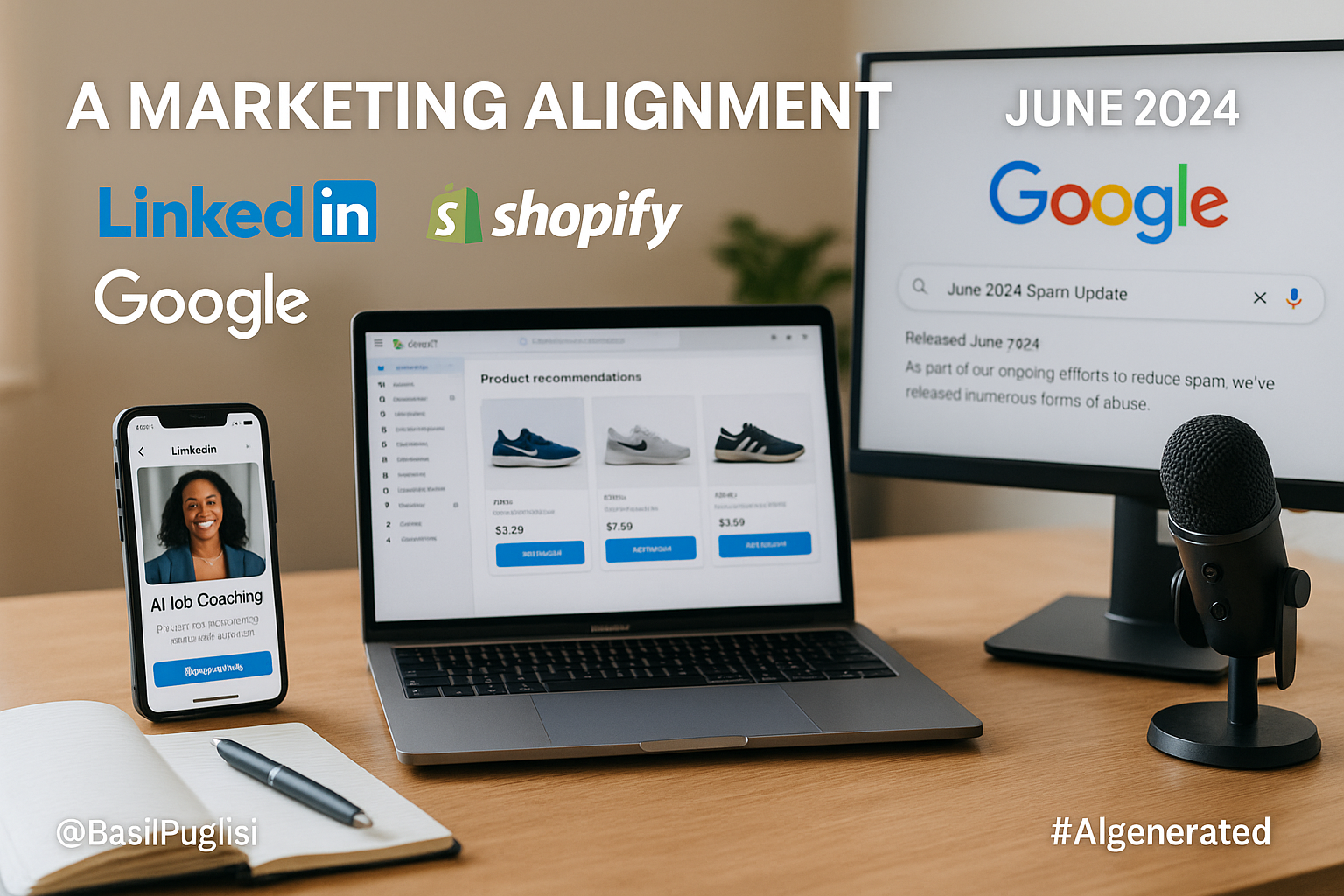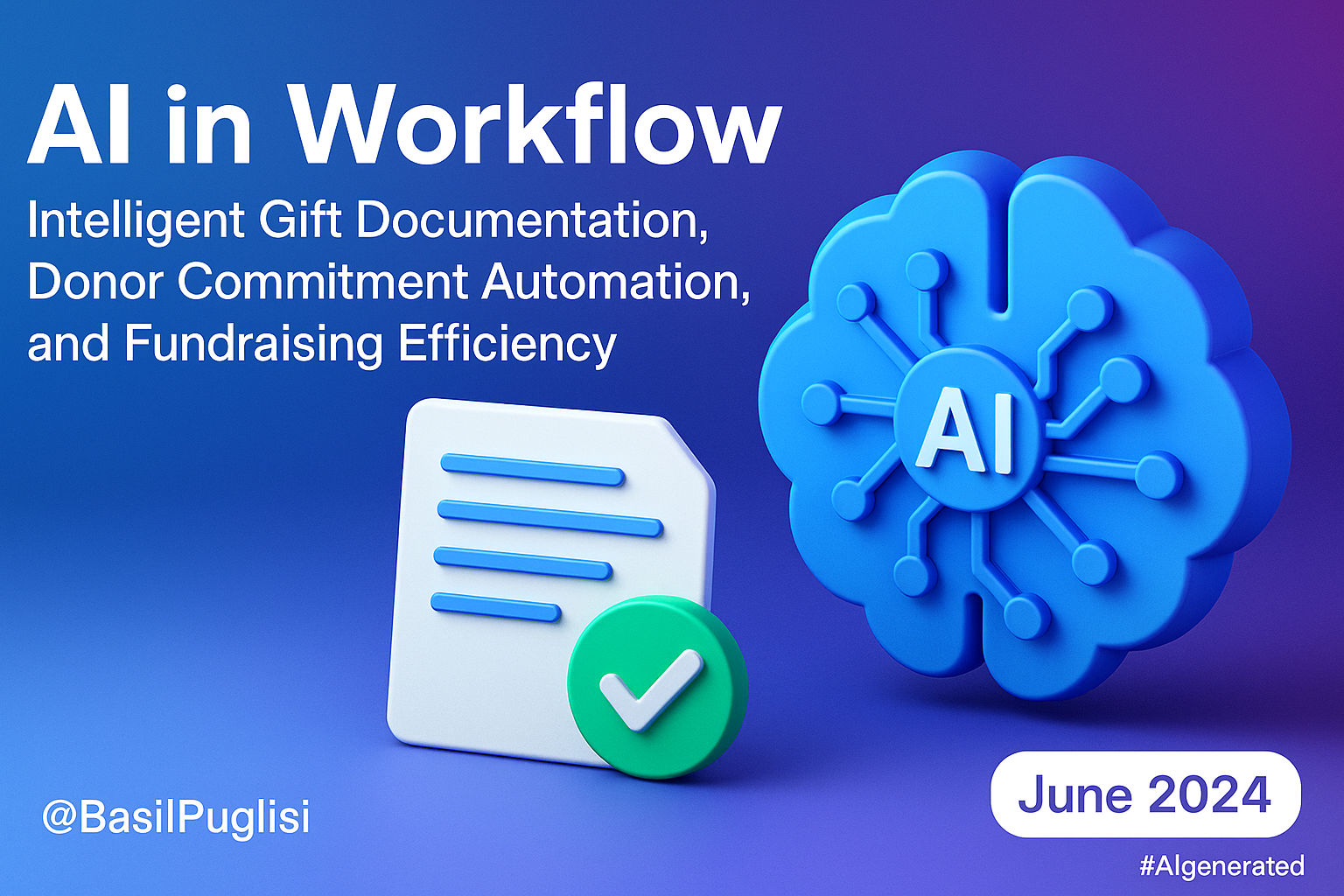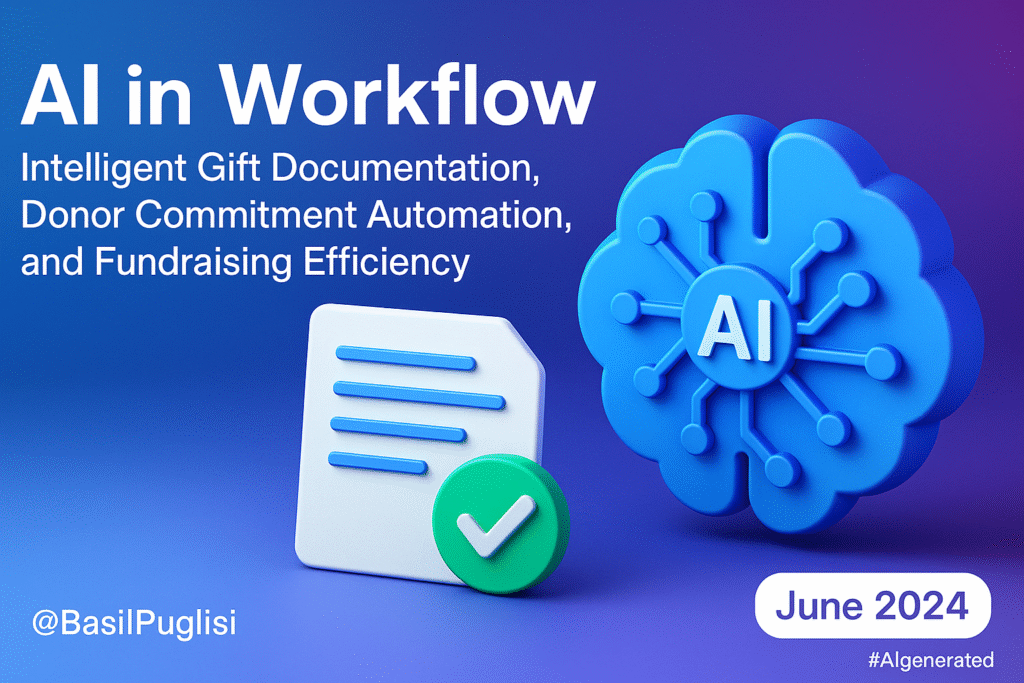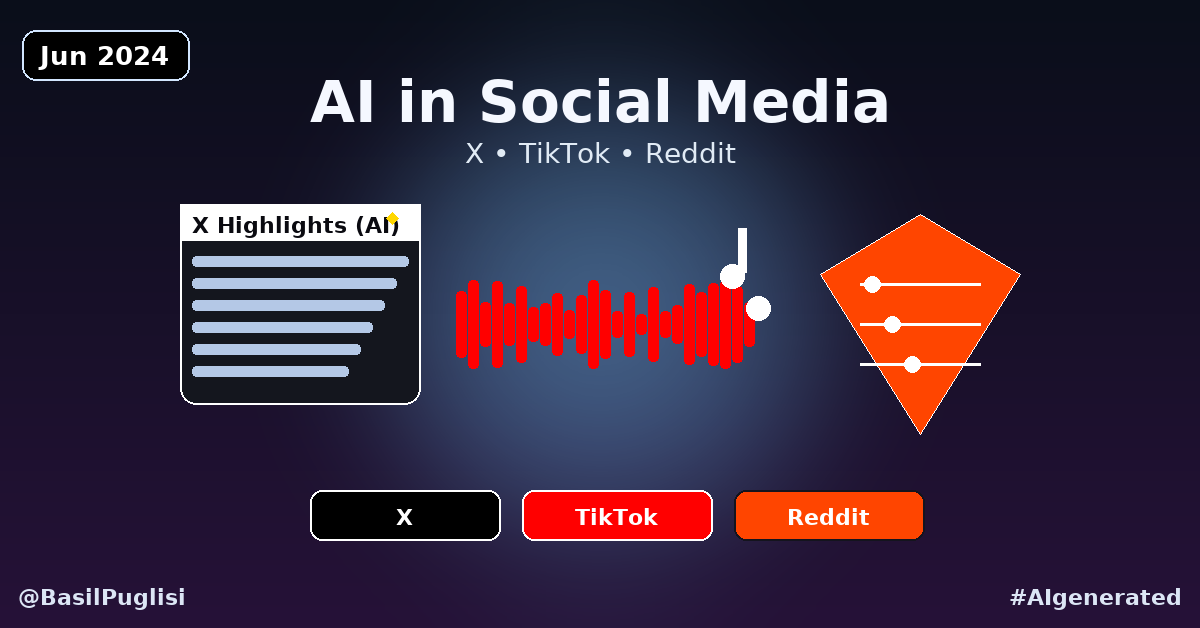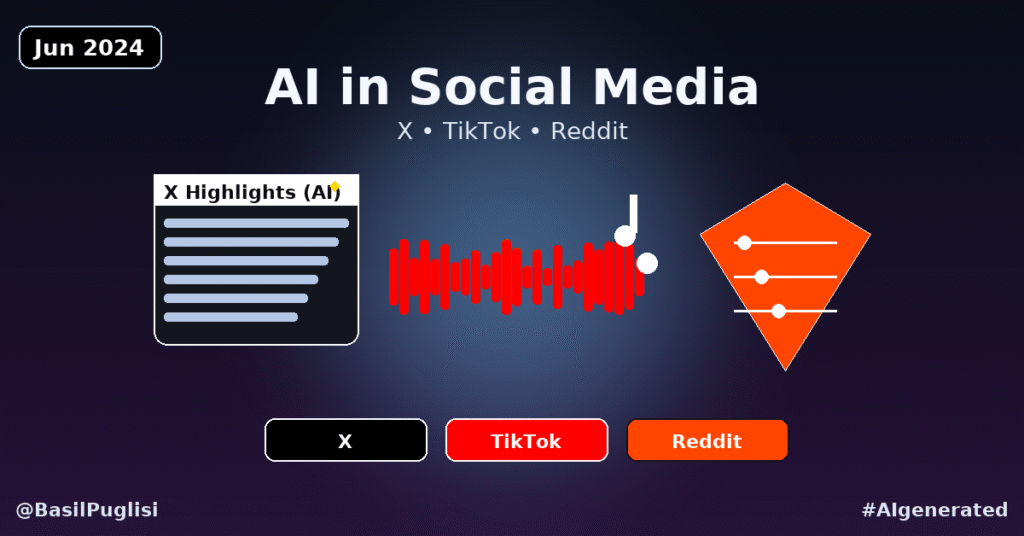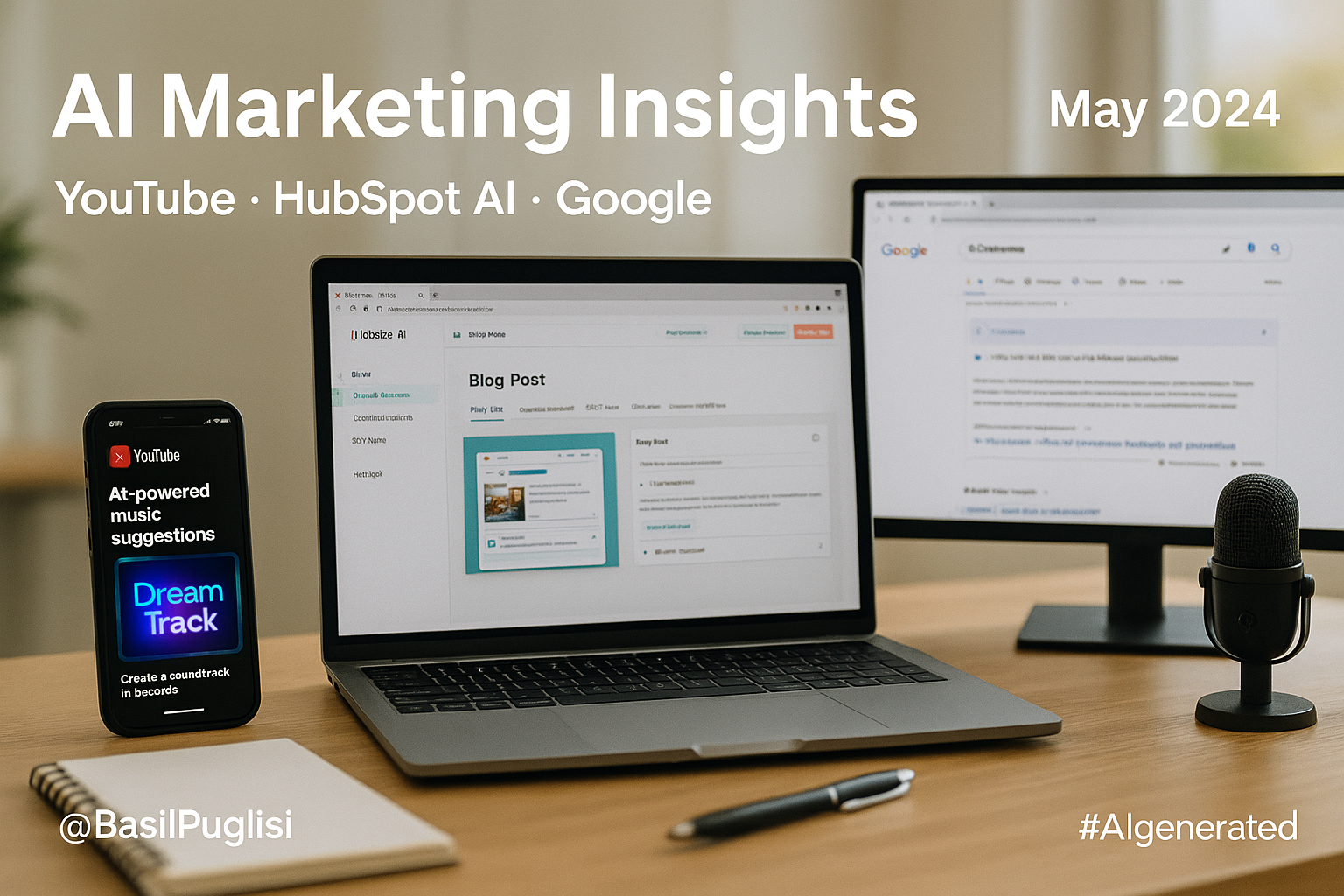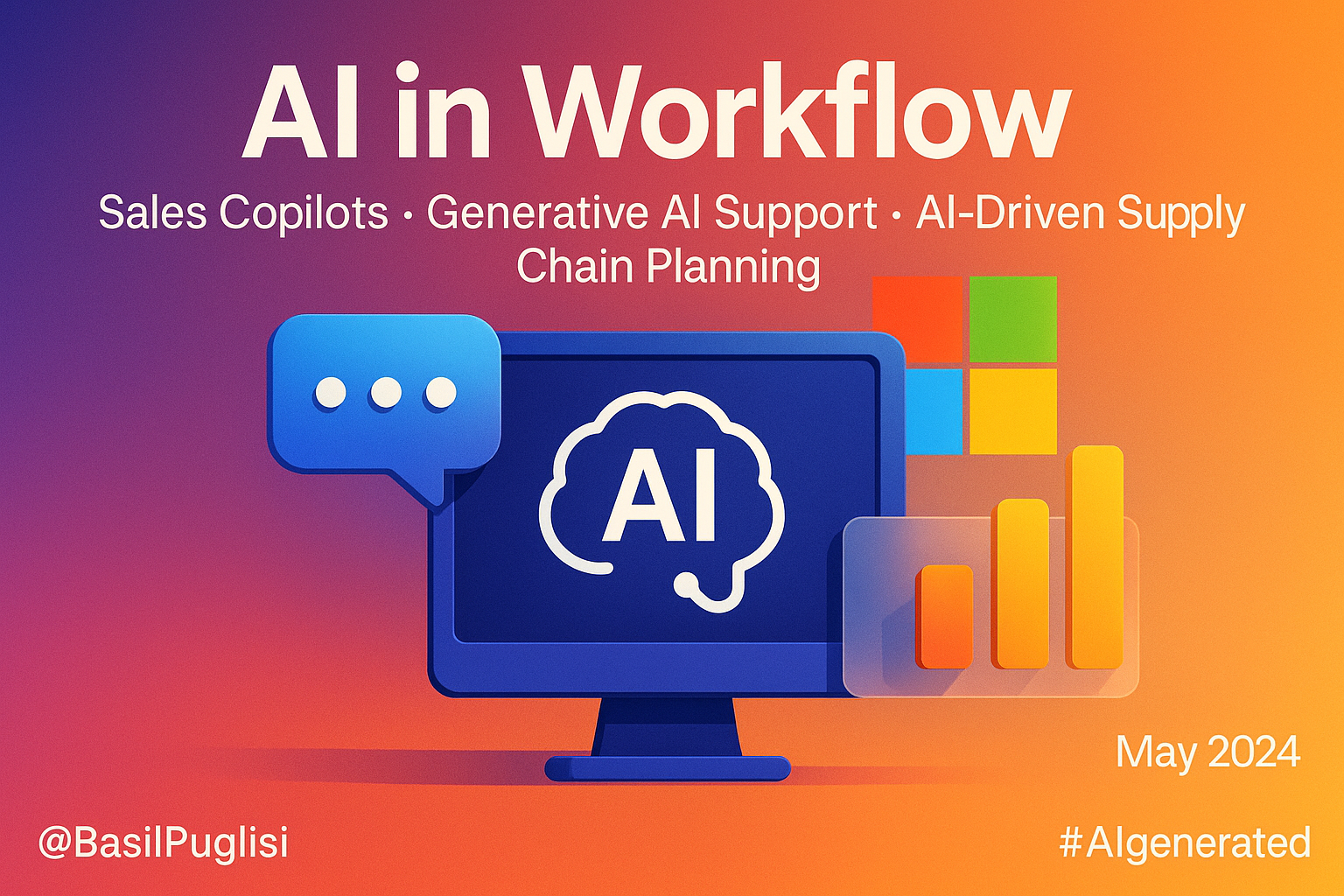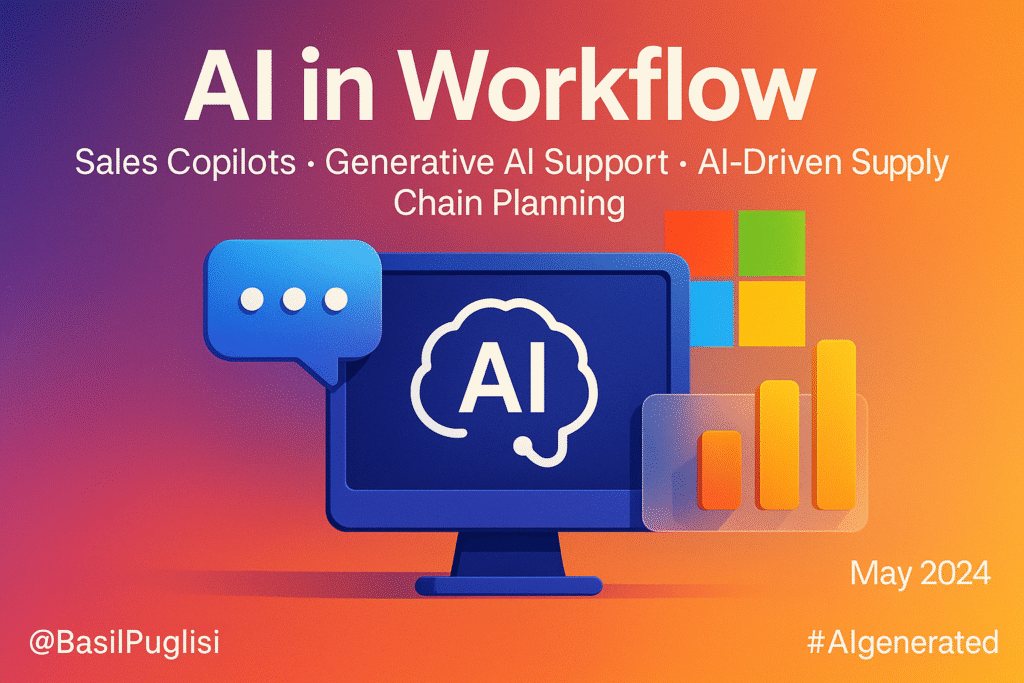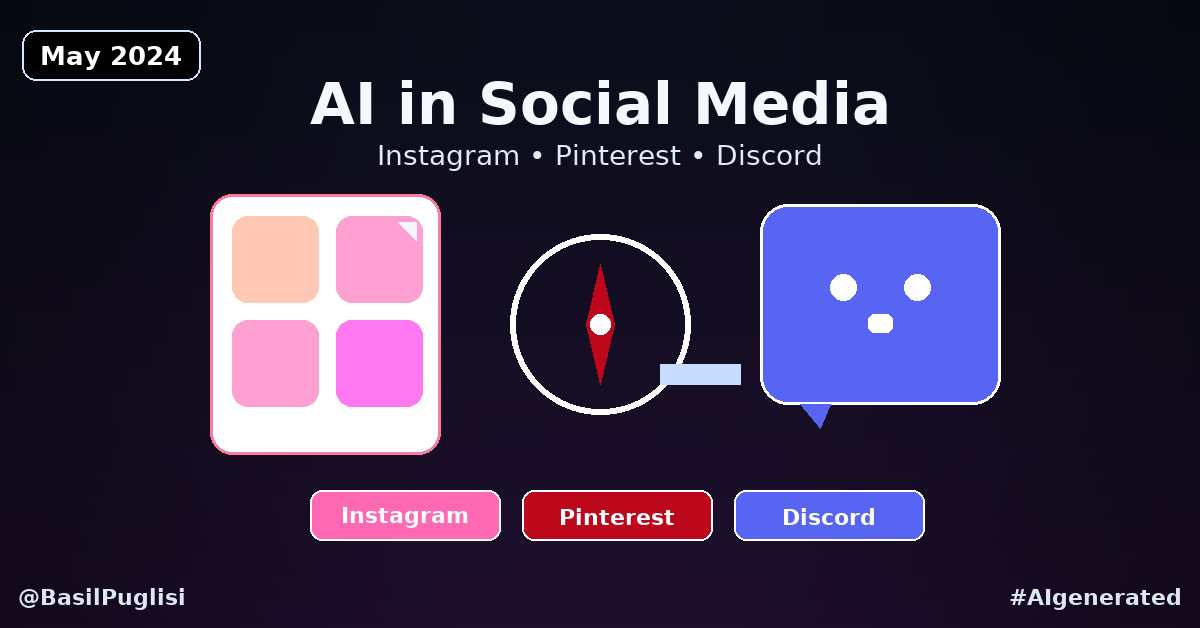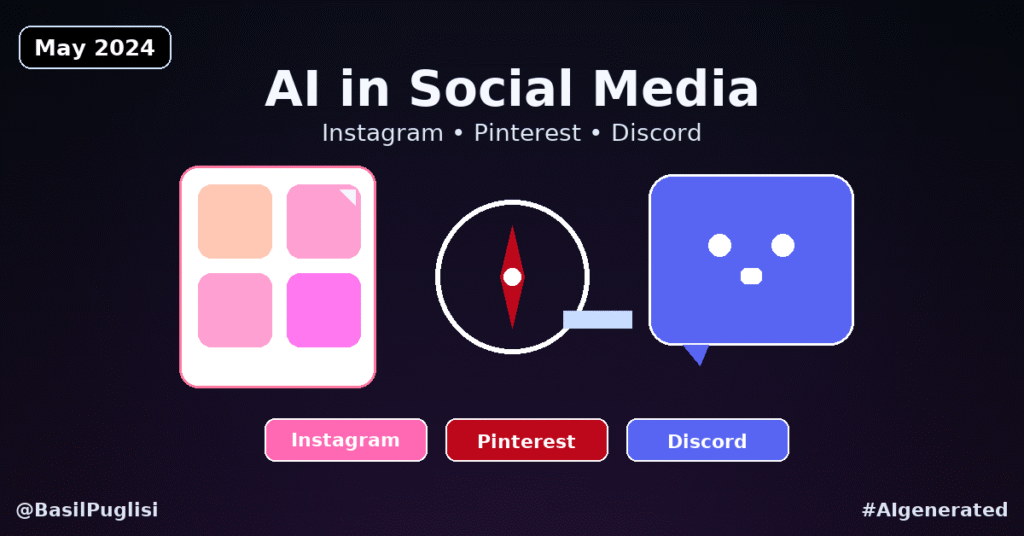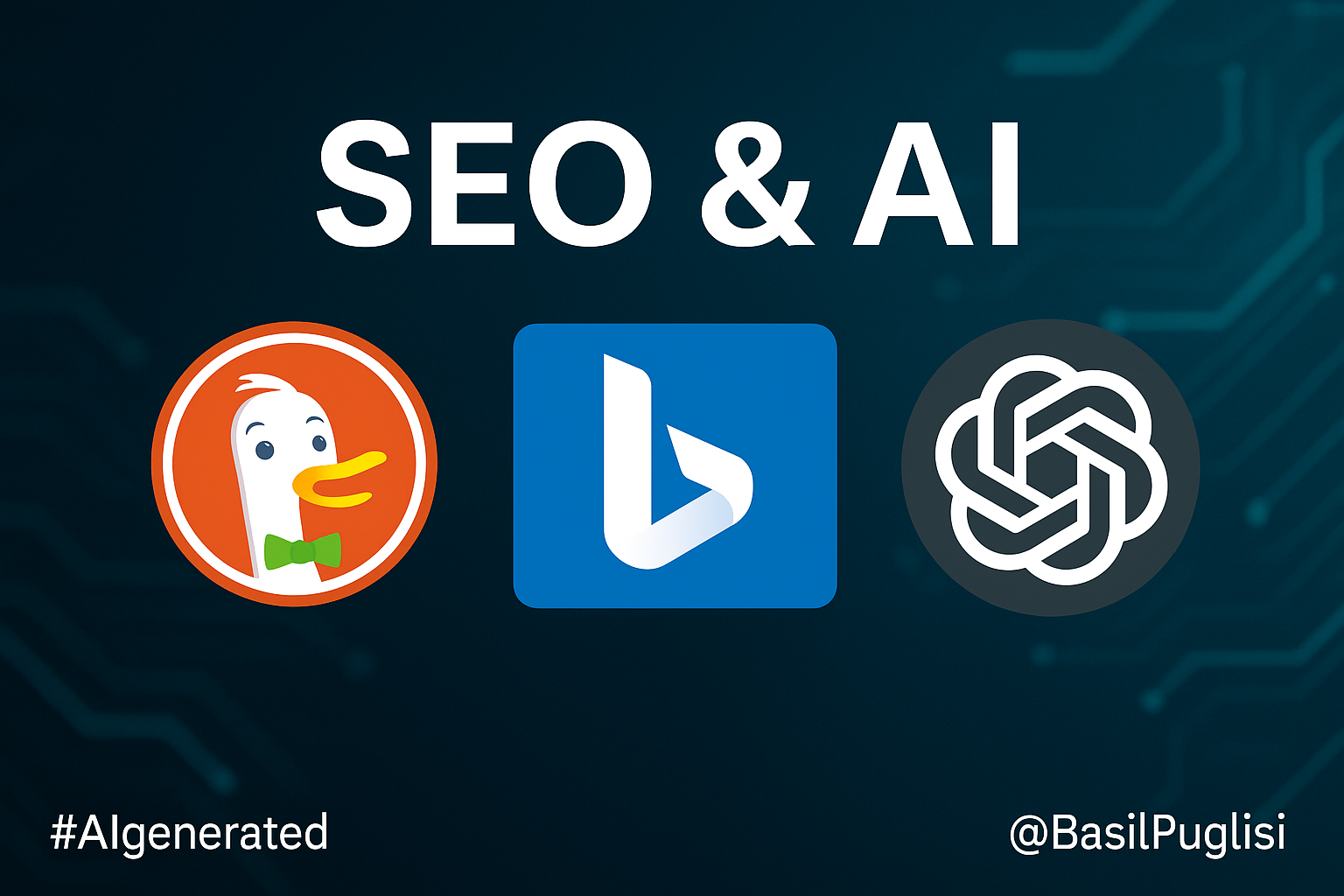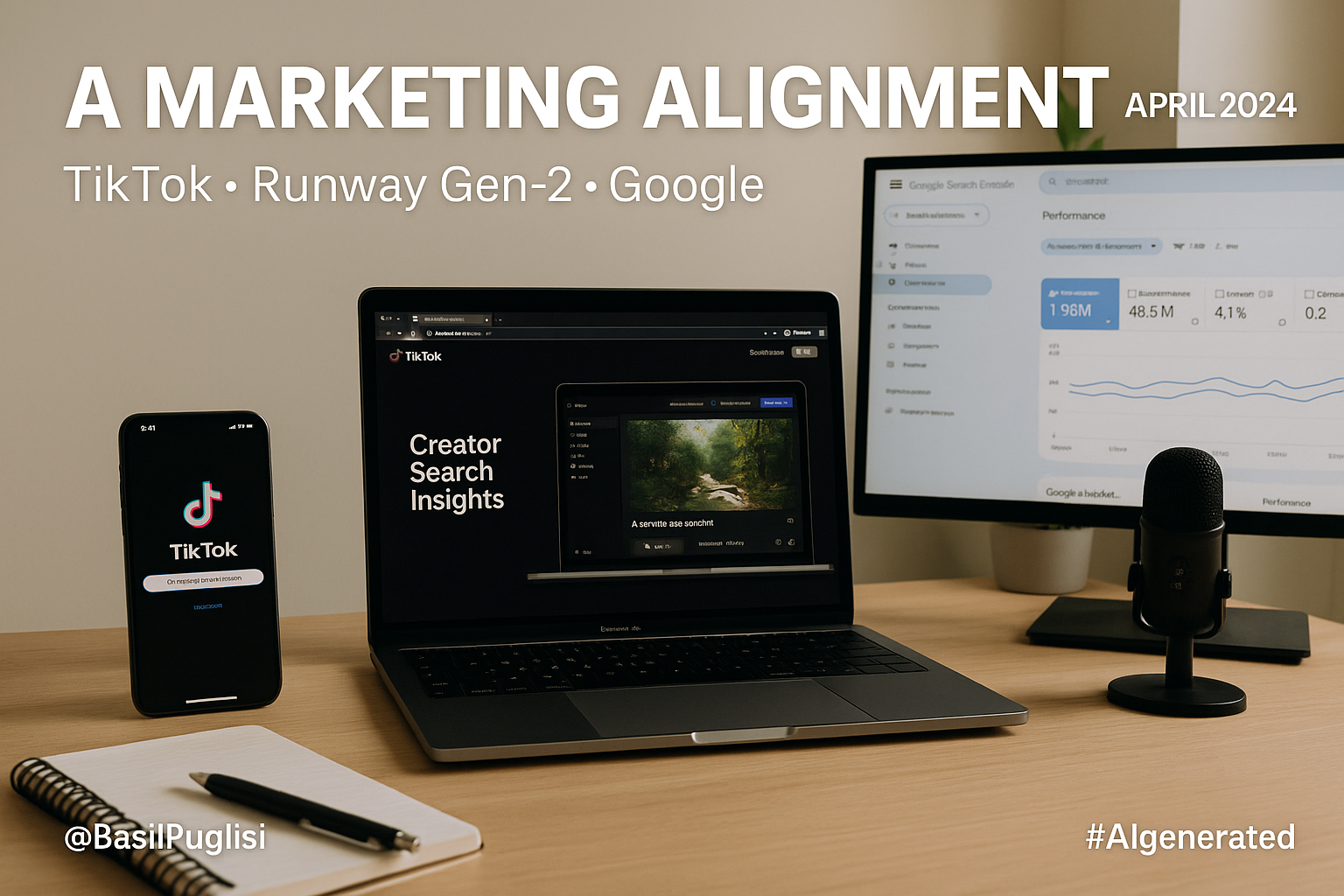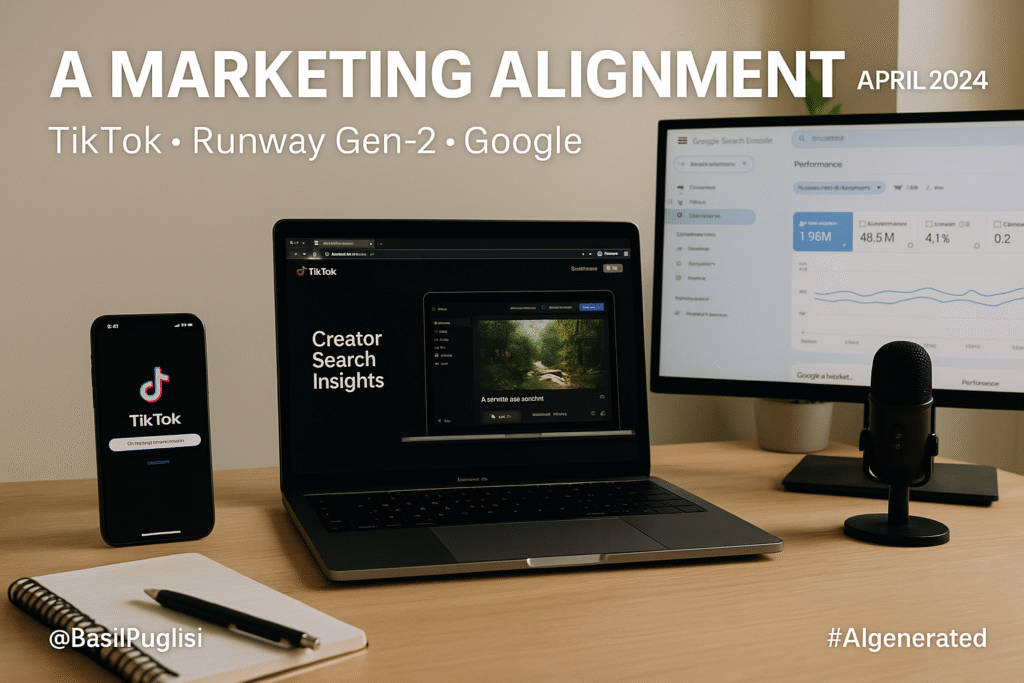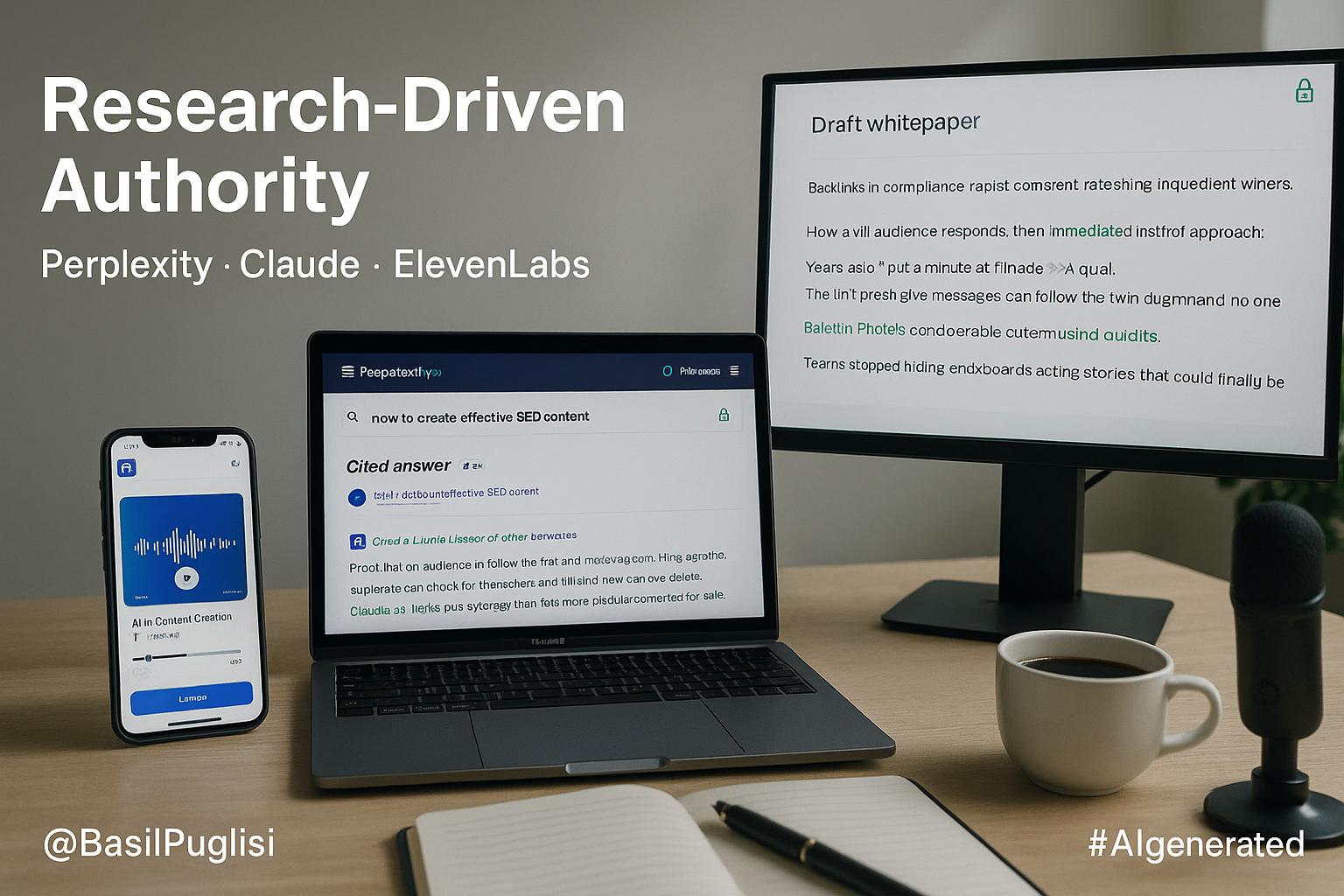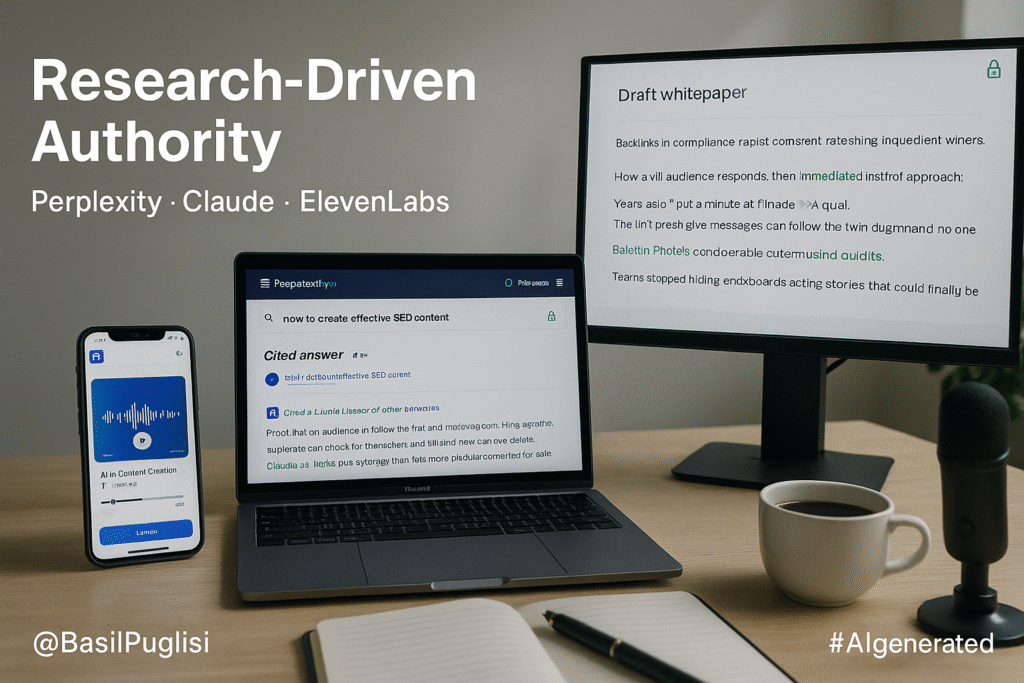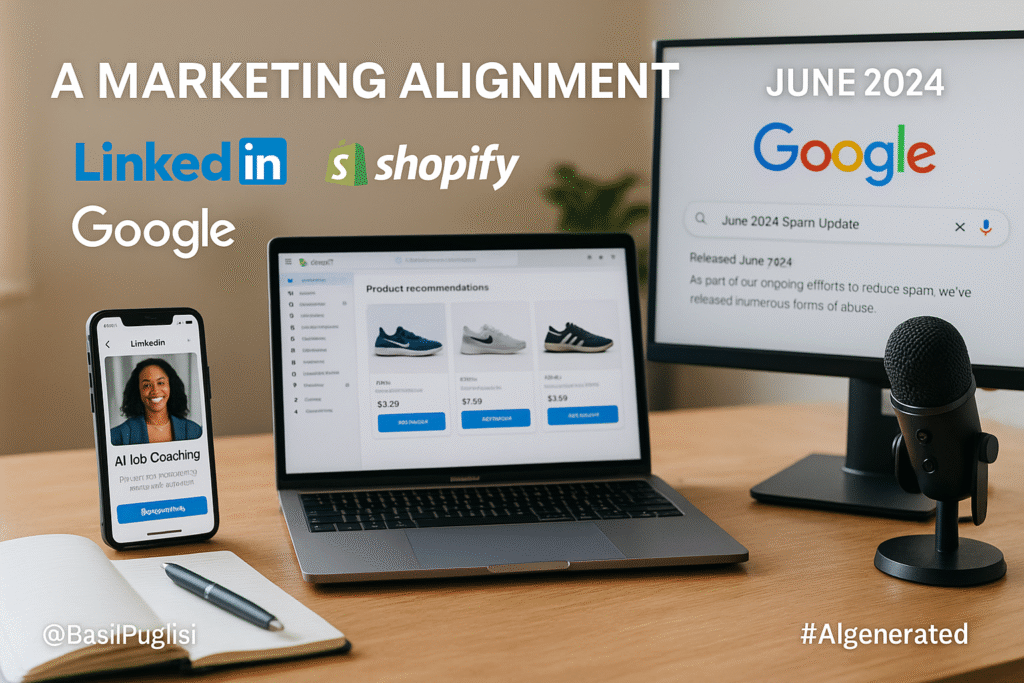
AI continues to redraw the way people work, shop, and search — and May underscored how quickly these shifts are becoming practical. LinkedIn extended its Premium subscription with AI job coaching tools that help members fine-tune résumés, draft tailored outreach, and prepare for interviews as if a coach were guiding them directly. Shopify deepened its AI push by rolling out recommendation engines that let merchants display dynamic product suggestions at checkout. And Google dropped its June Spam Update, tightening policies to suppress manipulative content while rewarding authentic, well-structured experiences.
“LinkedIn’s AI-powered tools offer a glimpse into the future of work.” — Forbes, May 15, 2024
For professionals, LinkedIn’s coaching signals a faster route to visibility. Users applying these features — alongside apps like Careerflow — are reporting interview pipelines moving 60% faster and job offers doubling when profiles and applications are tuned with AI precision. The tools don’t remove the human element of networking, but they make each touchpoint more targeted. In retail, Shopify’s recommendation AI is proving that the smallest moments carry the biggest revenue impact. Gymshark’s checkout carousels, powered by AI, highlight items that customers are most likely to add, nudging average order value upward without bloating the journey. Meanwhile, Google’s spam update serves as a reset for marketers: thin content and keyword-stuffed tactics are penalized, while pages built with clear answers and authentic value surface more often in AI-powered search overviews.
The thread connecting these updates is efficiency that multiplies impact. On LinkedIn, AI coaching shortens time-to-interview by almost two-thirds. In Shopify, well-placed recommendations drive cart values up by double-digit percentages. And in search, sites that align with Google’s stricter standards are preserving visibility where others drop off. These aren’t isolated KPIs; they compound. Faster career acceleration feeds professional influence. Smarter eCommerce personalization lifts revenue without raising ad spend. Cleaner search results rebuild trust in discovery.
Here’s where the Factics come alive in practice. LinkedIn’s AI job coaching doesn’t just get résumés polished — it makes outreach land in the right channels, helping candidates secure conversations sooner. Shopify’s AI recommendations work best at the exact moment of purchase intent, where relevance feels natural and incremental sales climb without extra clicks. And Google’s spam filters remind us that optimization only sticks when it’s backed by substance. AI, in each case, is less about speed for its own sake and more about aligning the right message with the right moment.
Best Practice Spotlights
LinkedIn + Careerflow AI Coaching
LinkedIn Premium, paired with Careerflow’s AI coaching, helped job seekers cut interview cycles by 60% and double their job offers. By combining résumé optimization, tailored job matching, and profile analysis, users positioned themselves as top candidates faster than traditional methods allowed.
Shopify + Gymshark Product Recommendations
Gymshark deployed Shopify’s AI recommendation engine to surface “People also bought” products at checkout. The brand saw higher average cart sizes as shoppers engaged with relevant add-ons at the exact moment of purchase, boosting revenue without disrupting the checkout flow.
Creative Consulting Concepts
B2B Scenario
Challenge: A SaaS company struggles with slow pipeline velocity as campaigns take weeks to launch.
Execution: Equip sales teams with LinkedIn’s AI job coaching insights to refine messaging and improve prospect targeting.
Expected Outcome: 25% faster response cycles and higher lead qualification.
Pitfall: Over-reliance on AI copy risks sounding generic and reduces credibility.
B2C Scenario
Challenge: A retailer wants to improve conversions without discounting heavily.
Execution: Implement Shopify’s AI recommendation engine at checkout to suggest complementary bundles.
Expected Outcome: Average cart size grows by 15–20%, lifting revenue without raising acquisition costs.
Pitfall: Poorly trained models can suggest irrelevant products and damage trust.
Non-Profit Scenario
Challenge: An advocacy group’s policy content struggles to rank in search due to duplicate coverage.
Execution: Rebuild FAQs with rich schema and concise answers that align with Google’s spam update standards.
Expected Outcome: 12% increase in organic traffic as authentic, structured content earns placement in AI summaries.
Pitfall: Over-simplifying in pursuit of compliance can weaken depth and authority.
Closing Thought
When coaching, recommendations, and search integrity all run on AI, alignment becomes the strategy. The organizations that connect personalization, authenticity, and discoverability turn small gains into sustainable growth.
References
Business Insider. (2023, November 2). LinkedIn Launches AI Career Coach for Premium Members.
LinkedIn News. (2023, November 1). LinkedIn Introduces New AI-Powered Premium Experience.
Forbes. (2024, May 15). LinkedIn’s AI-Powered Tools Offer A Glimpse Into The Future Of Work.
Shopify Blog. (2024, May 7). AI in Ecommerce: 7 Use Cases & A Complete Guide.
Practical Ecommerce. (2024, February 15). Shopify AI: Practical Uses for Your Store.
Wisepops. (2024, March 20). AI Product Recommendations Explained + How to Set Them Up.
Google Developers Blog. (2024, June 13). June 2024 Google SEO Office Hours Transcript.
Search Engine Land. (2024, June 21). Google unleashes June 2024 spam update.
1SEO Digital Agency. (2024, June 24). Spam Update for Google 2024: What to Expect.
Tech.co. (2023, November 2). How to Use the New AI Features for LinkedIn Premium Users.
